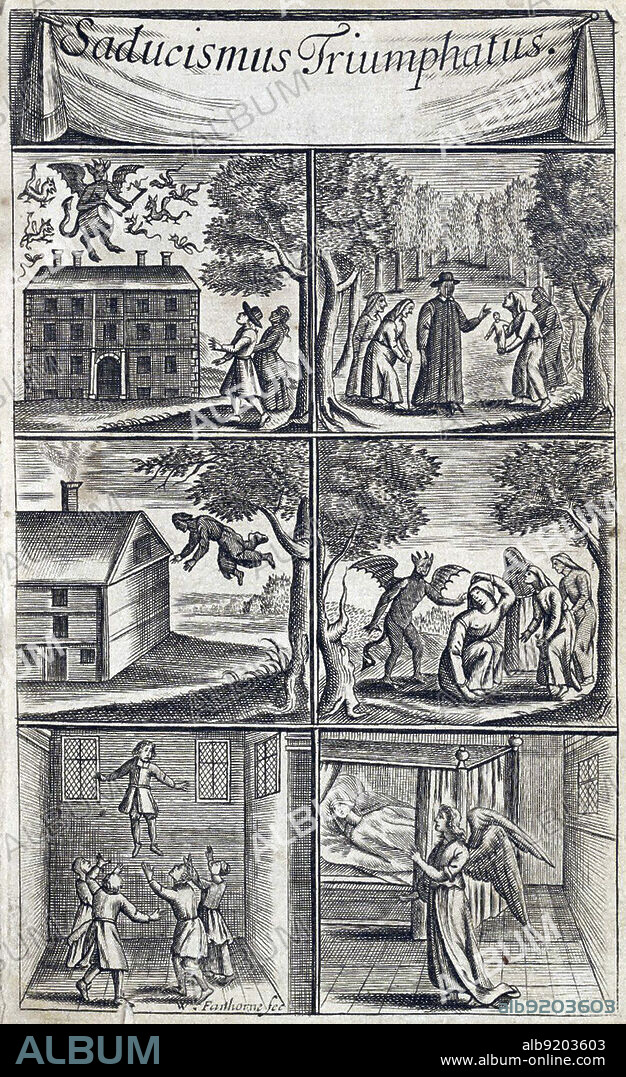alb9203603
""Saducismus triumphatus"", Frontispiece, 1682

|
Add to another lightbox |
|
Add to another lightbox |



Title:
""Saducismus triumphatus"", Frontispiece, 1682
Caption:
Entitled: "Saducismus triumphatus: or, Full and plain evidence concerning witches and apparitions. In two parts. The first treating of their possiblity. The second of their real existence. By Joseph Glanvil, 1682." Joseph Glanvill (1636-1680) was an English writer, philosopher, and clergyman. He is known also for Sadducismus Triumphatus (1681), which decried skepticism about the existence and supernatural power of witchcraft and contained a collection of 17th century folklore about witches, including one of the earliest descriptions of a witch bottle. Sadducismus Triumphatus deeply influenced Cotton Mather's Wonders of the Invisible World (1693), written to justify the Salem witch trials in the following year.
Credit:
Album / Folger Shakespeare Library / Science Source
Releases:
Model: No - Property: No
Rights questions?
Rights questions?
Image size:
Not available
Print size:
Not available
Keywords:
1682 • 17TH CENTURY • BW • CENTURY • ENGLISH • FRONTISPIECE • GLANVIL • HISTORIC • HISTORY • ILLUSTRATION • JB6612 • JOSEPH • SADUCISMUS • SUPERNATURAL • TREATISE • TRIUMPHATUS • VIGNETTES • WITCH • WITCHCRAFT
 Pinterest
Pinterest Twitter
Twitter Facebook
Facebook Copy link
Copy link Email
Email

